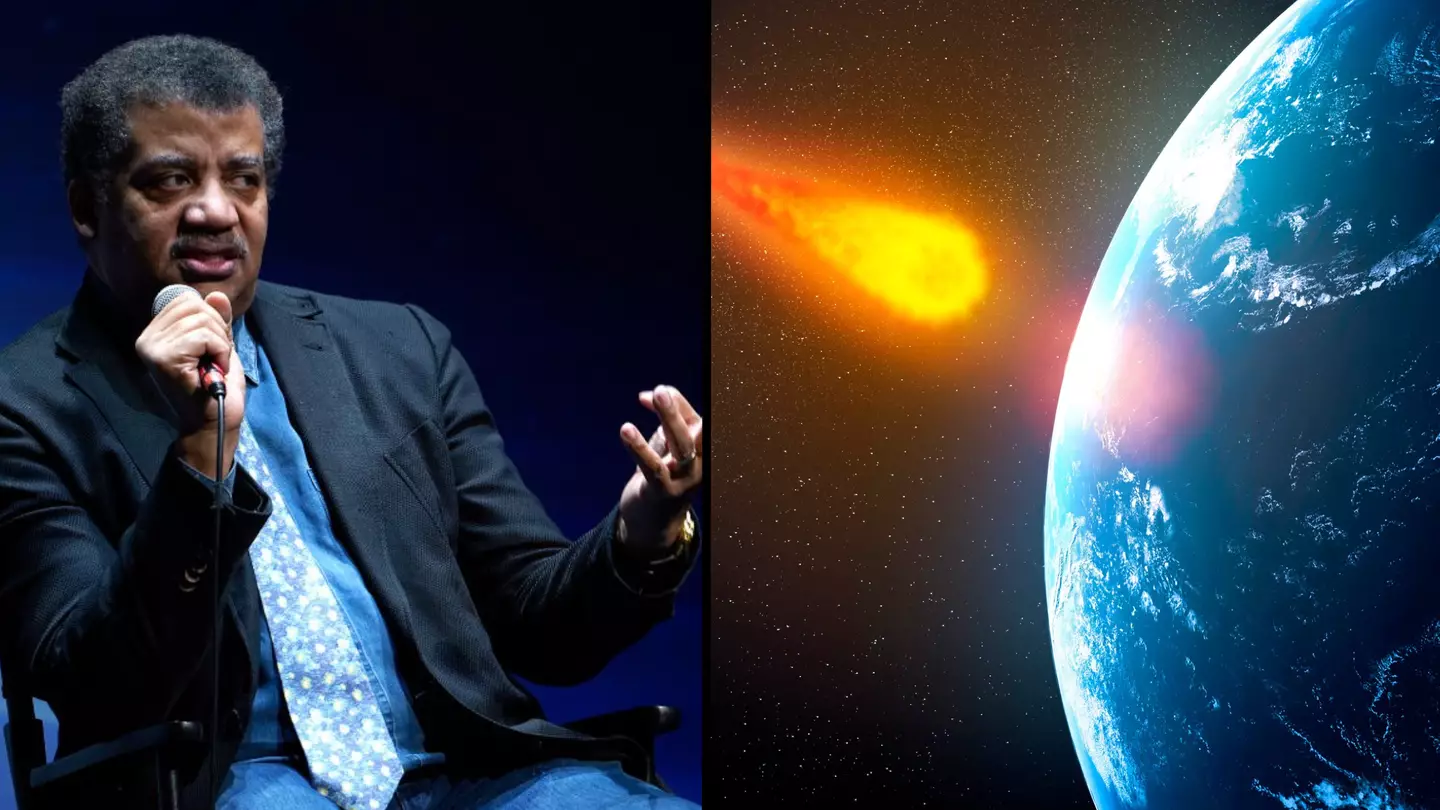
Astrophysicist Neil deGrasse Tyson once shared a terrifying prediction about when an asteroid could possibly hit Earth.
In an unearthed interview with Conan O'Brien in 2007, Tyson spoke about the threat of an asteroid named Apophis.
Asteroids - which are sometimes referred to as 'minor planets' - are rocky remains left over from the formation of the solar system.
Advert
When asked about the discovery of Apophis, which had taken place three years earlier, Tyson explained what could happen if it ever hit Earth.

"If it strikes and hits the centre of where we think it will be, it will plunge into the Pacific Ocean, cavitate the ocean with a three-mile wide hole, three miles deep," he said.
"At that point, a pulse of water rushes towards the coastline of North America, then the water will slosh back in.
"You get these pulses, every pulse that hits the coast, it reaches those million dollar homes in Malibu, brings them out to the ocean, rushes them back, and they don't have the same shape they used to.
Advert
"There's a one in 45,000 chance that it will hit. We've got top people working on this problem."
Tyson explained that if it did hit, it would be on 13th April, 2036. However, in a later interview, Tyson said that there would also be a 'close approach' in the year 2029, too.
The astrophysicist explained that the disaster wouldn't necessarily mean millions of fatalities, due to the fact we would be aware that the asteroid was approaching in enough time.
Advert
The asteroid Tyson was referring to, named Apophis, was discovered on 19 June 2004 by astronomers Roy Tucker, David Tholen, and Fabrizio Bernardi at the Kitt Peak National Observatory in Arizona.
According to NASA, since its discovery, scientists have been tracking the asteroid to understand it's trajectory.
"NASA has redirected a spacecraft to study the asteroid," they explain. "The spacecraft was sent to study Apophis during the asteroid's 2029 Earth flyby.
"OSIRIS-APEX will fly-by Apophis on April 23, 2029, at a distance of about 2,500 miles (4,000 kilometers).
.jpg)
Advert
"It will then rendezvous with Apophis in June for an 18-month campaign to map the asteroid’s surface and analyze its chemical makeup."
During the investigations, the spacecraft will take images of the asteroid, meanwhile, Earth-based telescopes will also closely observe its movements.
"In the hours after the close encounter, Apophis will appear too near the Sun in the sky to be observed by ground-based optical telescopes," NASA further explain. "This means any changes triggered by the close encounter with Earth will be best detected by the spacecraft.
"Apophis is about 1,100 feet (340 meters) in width. It’s expected to safely pass close to Earth – within 19,794 miles (31,860 kilometers) from our planet’s surface – on April 13, 2029. This will be the closest approach to Earth by an asteroid of this size that scientists have known about in advance."
NASA explained that the risk of it hitting our planet in 2029 and in 2036 had been ruled out, however, after 'revising' their data recently, it was discovered that a very small chance of a collision could happen if one particular event occurred.
